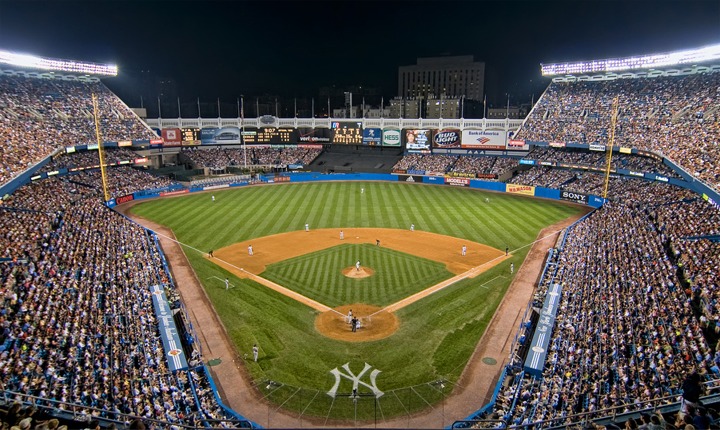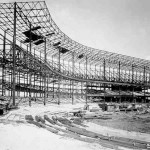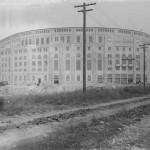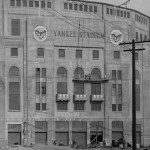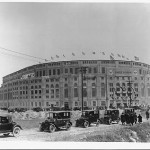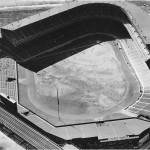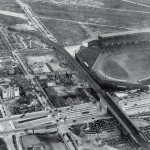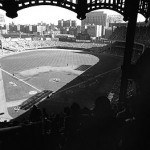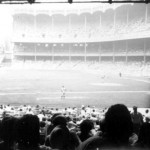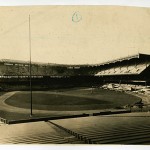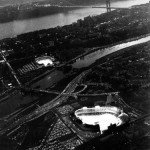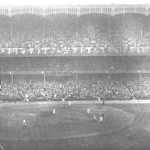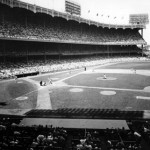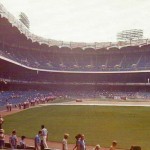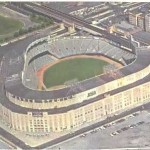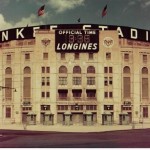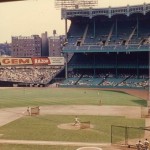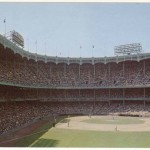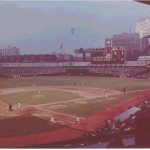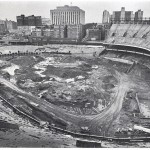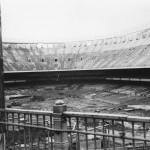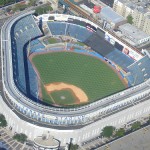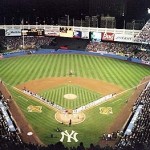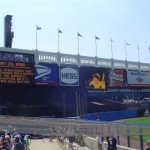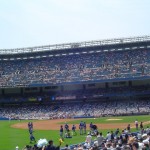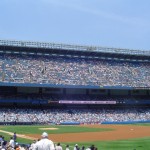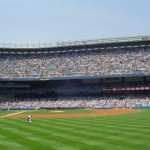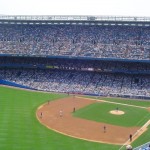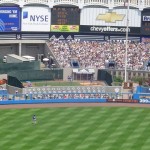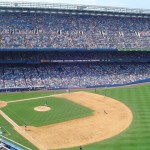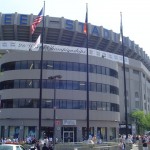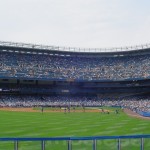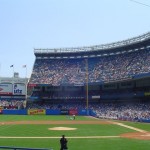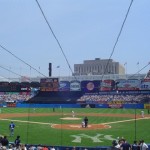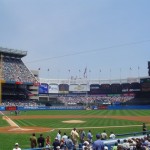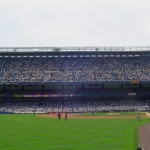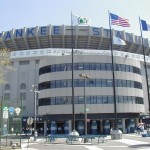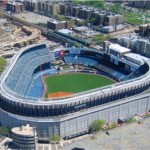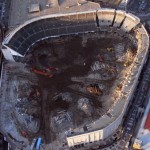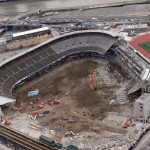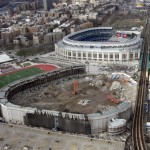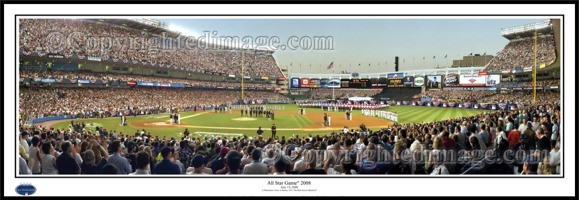Throughout the world there are many buildings or structures, that become famous, legendary or popular over time for a variety of reasons. Yankee Stadium was one of these historic archives to many baseball fans across the world. The 2008 baseball season marked the end to one of the most famous stadiums in the world, Yankee Stadium. Since the time of its opening more than eight decades ago, the stadium was the home to one of the greatest teams in sports, the New York Yankees, with legendary players such as Babe Ruth, Lou Gehrig, Joe Dimaggio, Mickey Mantle and today’s stars, Alex Rodriquez and Derek Jeter. The Yankees have a long history that dates back to Baltimore at the turn of the 20th century. They moved to New York in 1903 and were then known as the New York Highlanders. They played at Hilltop Park until 1912, when their lease expired. They accepted an invitation to play at the New York Giants home, Polo Grounds and changed their name to the Yankees. They signed a ten year lease at the Polo Grounds in 1913 and began to outdraw the Giants at the end of the decade as a result of the acquisition of Babe Ruth. By 1920, the Yankees became the first team to attract more than one million fans. The Giants evicted the Yankees after the 1922 season, hoping that the Yankees would have to move to a borough far away so the Giants would attract more fans.
The Yankees looked at several locations across the city to construct a new stadium. Various sites were explored including Queens, upper Manhattan and along 5th Avenue and 32nd Street. Yankees co-owners, Colonel Jacobs Ruppert and Colonel T.L. Huston, paid $675,000 for land in the Bronx, less than one mile from Polo Grounds, to build the stadium. Designed by Osborn Engineering, original plans called for a triple-decked stadium with grandstands circling the entire field. However, because the stadium seemed too foreboding, the original plans were scaled back. Instead, the ballpark became the first to have three tiers of seating, consisting of 58,000 seats. It was also the first ballpark to be called a stadium due to its enormous size. Construction of the stadium began on May 5, 1922 and was completed in just 284 days. The stadium was built of mainly steel and concrete, as the triple decked grandstand extended behind homeplate and up the base lines. The lower deck continued until it met the wooden bleachers behind the outfield fence. A 15-foot copper facade was erected to adorn the stadium’s third deck. This quickly became one of its most recognized and grandest features. The scoreboard was located beyond the bleachers in right field. Given the name Yankee Stadium, it was completed in only 284 days, opening on April 18, 1923. Original dimensions at Yankee Stadium were 295 ft. (right), 490 ft. (center), and 281 ft. (left). Centerfield became known as “Death Valley” because of its distance from homeplate.
Since the Yankees achieved great such tremendous success in attracting fans at Yankee Stadium, it was not long before the stadium was expanded. The triple decked grandstand was extended into left field in 1928 and the same extension was completed down the right field line in 1937. Concrete bleachers replaced the wooden bleachers beyond the outfield fence. With the addition of the grandstands, the capacity of Yankee Stadium grew to nearly 80,000, depending on the amount of people that stood while watching games. The first of many monuments and plaques was added in 1932. This area became known as “Monument Park” in fair territory in dead center field when a monument to former manager Miller Huggins was erected. Monuments of Babe Ruth, Lou Gehrig, and others were erected in years following 1932. Night baseball came to Yankee Stadium on May 28, 1946 and a new scoreboard was installed in 1959. Other sports, such as boxing and football, were played at Yankee Stadium until the early 1970s.
In the early 1970s, Yankee Stadium began showing its age. In 1971, Yankees owner Mike Burke began exploring the possibility of building a new stadium in New Jersey. However New York City Mayor, John Lindsay, announced that the city would buy and renovate Yankee Stadium, purchasing it for $24 million in 1972. The same year, George Steinbrenner bought the team. The Yankees played in Yankee Stadium one more year before drastic changes were made.
Renovations to Yankee Stadium began immediately after the 1973 season. While Yankee Stadium was being renovated the Yankees played at Shea Stadium, home of the New York Mets. Parts of Yankee Stadium were completely demolished. Changes were made to eliminate the posts and columns that supported the upper deck. The copper facade atop the upper deck was removed and replicated at the top of the scoreboard that runs from center field to right field. New 22 inch blue, plastic seats replaced the old 18 inch wooden green seats reducing the capacity to 54,000. New luxury suites and concessions were added along with the remodeling of the press box and restrooms. To eliminate climbs to the third level, escalators and elevators were added to parts of the exterior of the stadium. The facade of Yankee Stadium was repainted and a 138 foot tall replica of a Louisville Slugger baseball bat was placed near the entrance of the stadium.
After two years of renovations, Yankee Stadium reopened on April 15, 1976. There were several striking differences that fans noticed at the renovated stadium. They included the monuments in centerfield that were moved to Monument Park behind the left-centerfield wall and the original copper facade now replicated above the scoreboard in the outfield. However, the transition to the renovated Yankee Stadium was easy as the Yankees made it to the 1976 World Series. Since the late 1970s, very few changes occurred at Yankee Stadium. It remained the home to many great ballplayers and an excellent place to see a game. Since its opening in 1923, Yankee Stadium was home to 26 World Championship teams. In the late 1990s the Yankees began exploring the possibility of building a new stadium as Yankee Stadium lacked many of the modern amenities of newer ballparks built. In June 2005, the team announced plans to construct a new Yankee Stadium. Yankee Stadium will be demolished over a two year period, completed by Summer 2010, and converted into a public park area featuring a baseball and softball field. Nearly 12,000 trees will be planted in the shape of the stadium. For more than eight decades Yankee Stadium was the home to some of the greatest players in baseball. The Yankees played their last regular season game at Yankee Stadium on September 21, 2008. The new Yankee Stadium opened across East 161st Street in April 2009.

